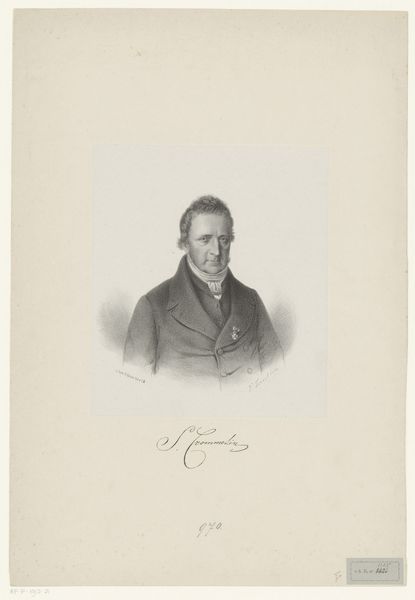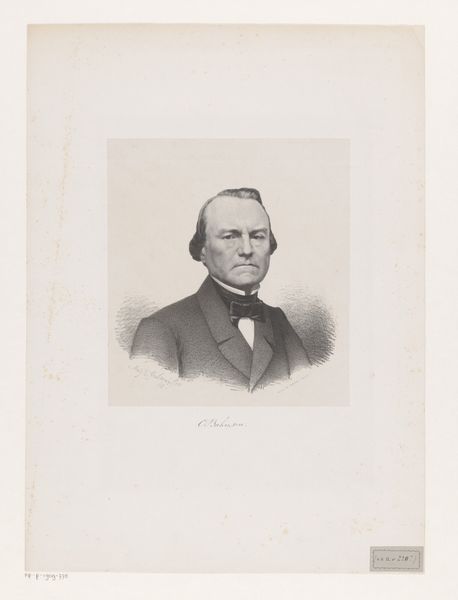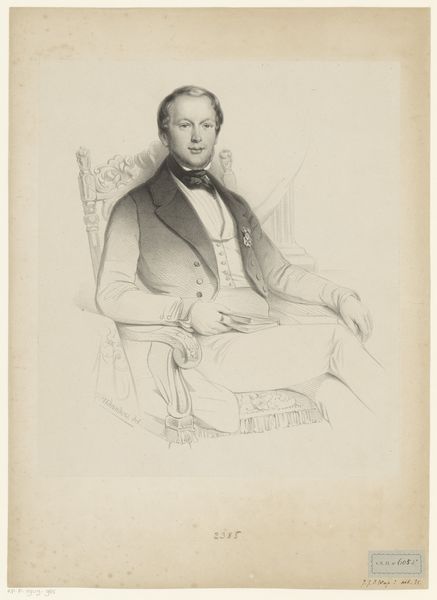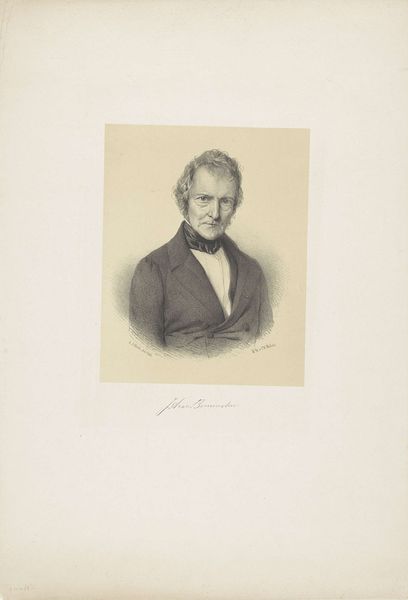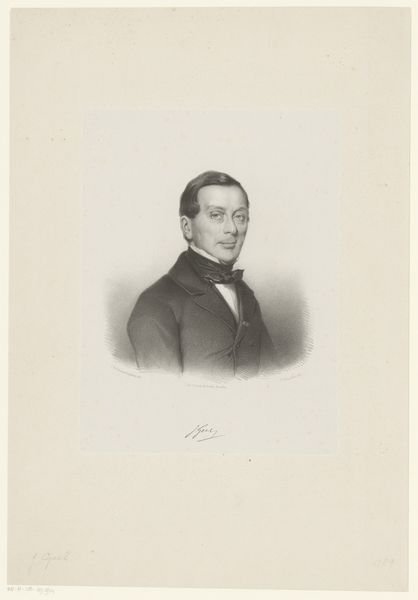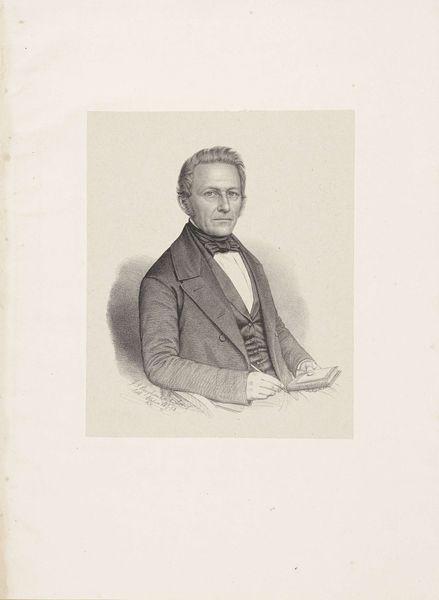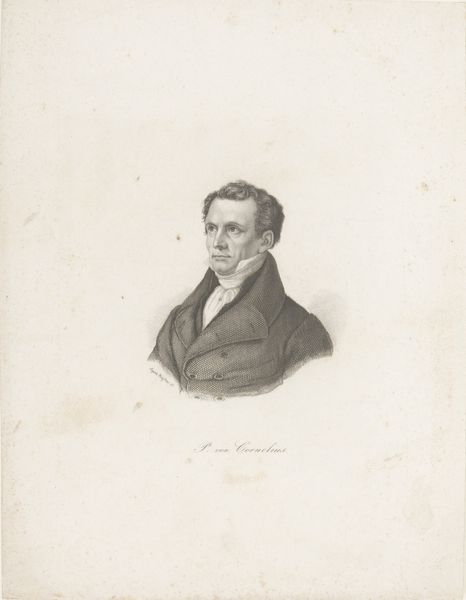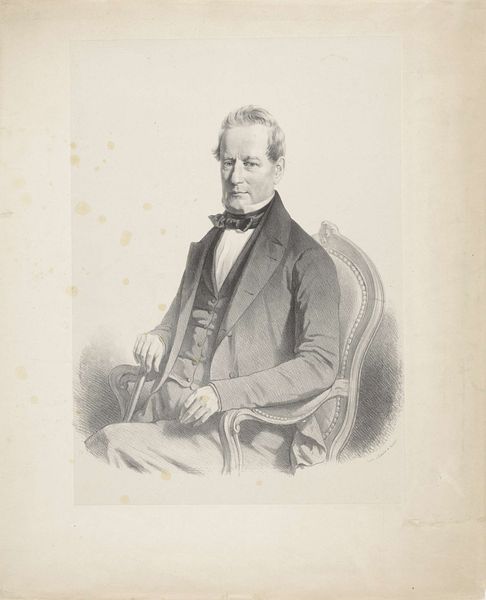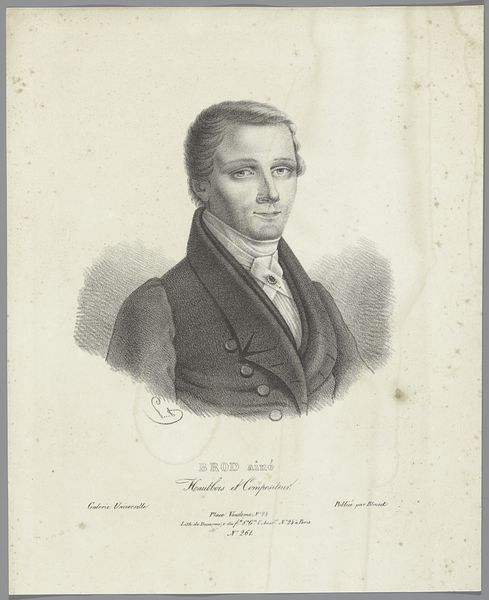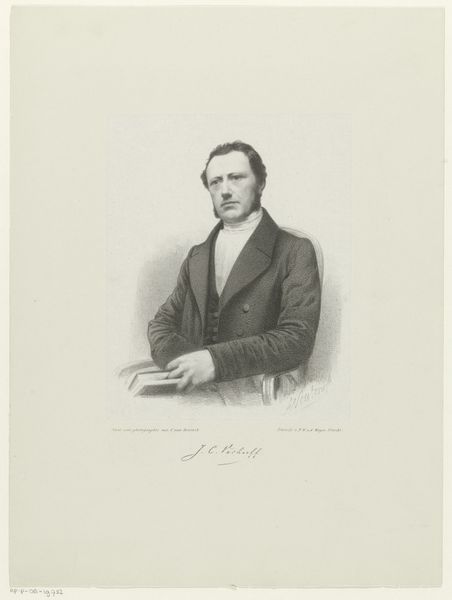
print, engraving
#
portrait
# print
#
pencil drawing
#
limited contrast and shading
#
engraving
#
realism
Dimensions: height 220 mm, width 140 mm
Copyright: Rijks Museum: Open Domain
Editor: So, this is a print titled "Portret van Anton Pannasch," created in 1845 by Franz Stöber. The engraving is beautifully rendered, but the subject's gaze is so direct, almost unsettling. What symbolic reading can we give it? Curator: That gaze *is* striking, isn't it? It's fascinating how direct eye contact can evoke such immediate response, even across centuries. Before photography became widespread, portraiture carried an immense responsibility to not only record likeness but also convey status, character, and even aspiration. Look at the crisp lines of his jacket, the deliberate, precise marks that imply quality material. What might that signify about his societal role? Editor: Perhaps indicating respectability, even authority? The subtle shading seems to soften that sternness, though. Curator: Indeed. Consider, too, how Stöber utilizes a formal structure, typical of the period, but softens it with a lighter touch than some contemporaries. He still uses established symbols of power like directness in the face and details of affluence, but not with the visual 'noise' that can flatten out individual character in so many similar portraits. What feeling does the lettering induce in you? Editor: I am reminded that his is an aesthetic as well as a character portrait! Seeing Pannasch's own signature in script creates an immediacy between viewer and sitter. It personalises him again. Curator: Exactly. His carefully inscribed name is designed to fix the image in your mind, a carefully constructed statement, echoing the need to remember important men, in this period when technology to make that 'fixing' of memory permanent was rare. This isn't just a face; it's an emblem, carrying memory forward through the deliberate language of visual symbols. Editor: So much intention packed into what at first glance seems a simple portrait! Thanks, I'm learning to read portraits much better. Curator: I learned as much from your responses! These dialogues ensure that historical personages maintain visibility and accessibility within memory, and prompt the creation of cultural relevance.
Comments
No comments
Be the first to comment and join the conversation on the ultimate creative platform.
